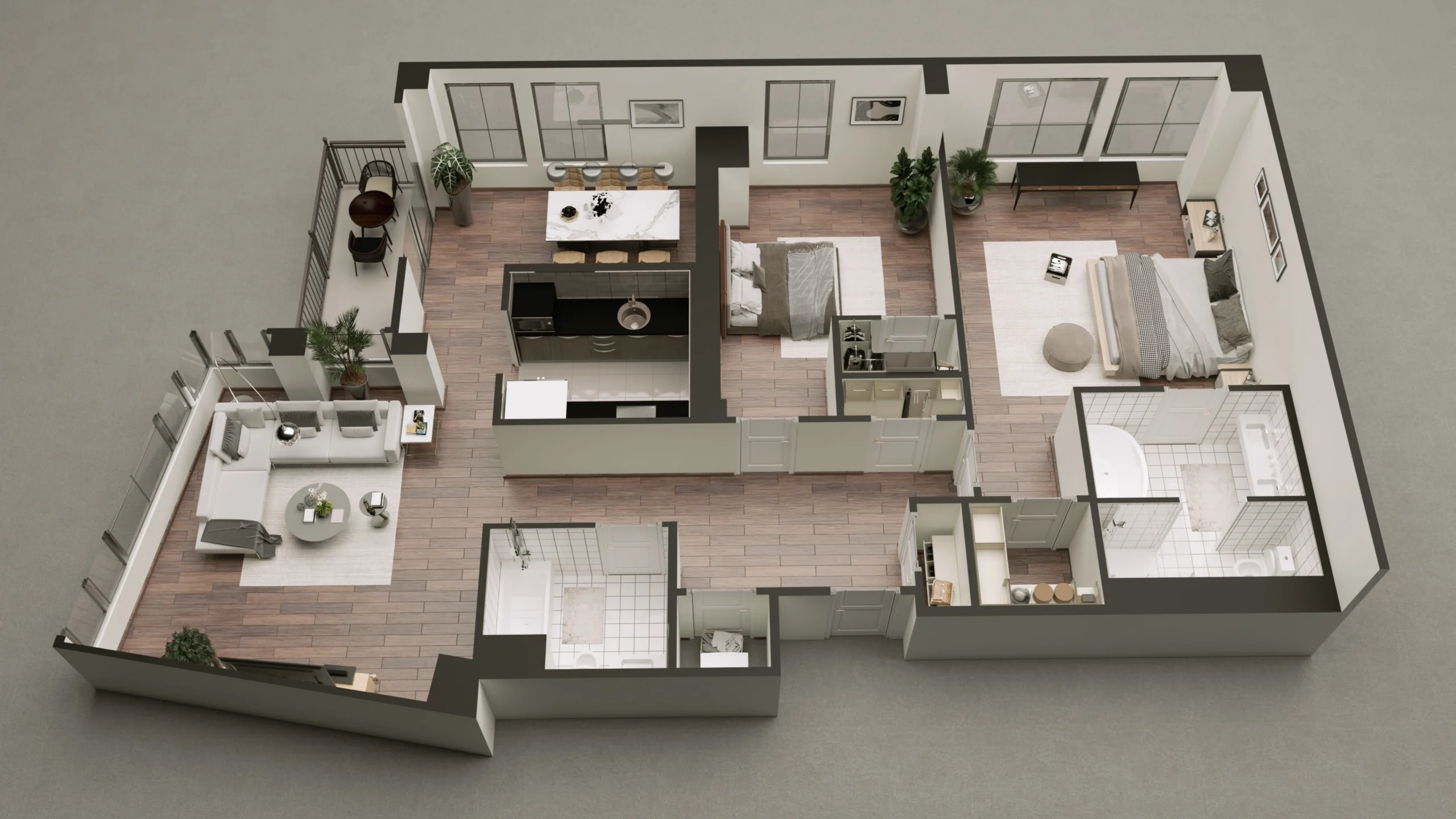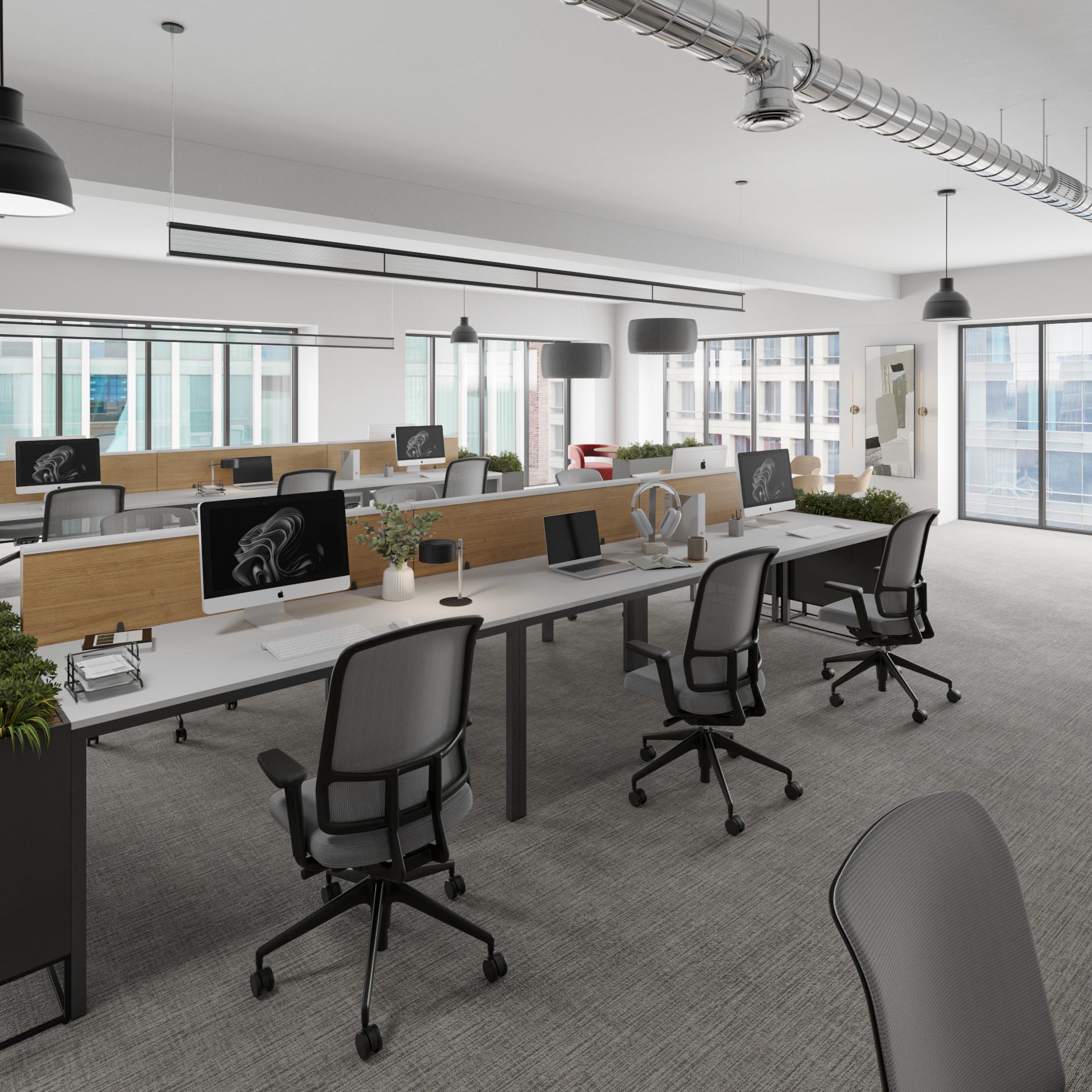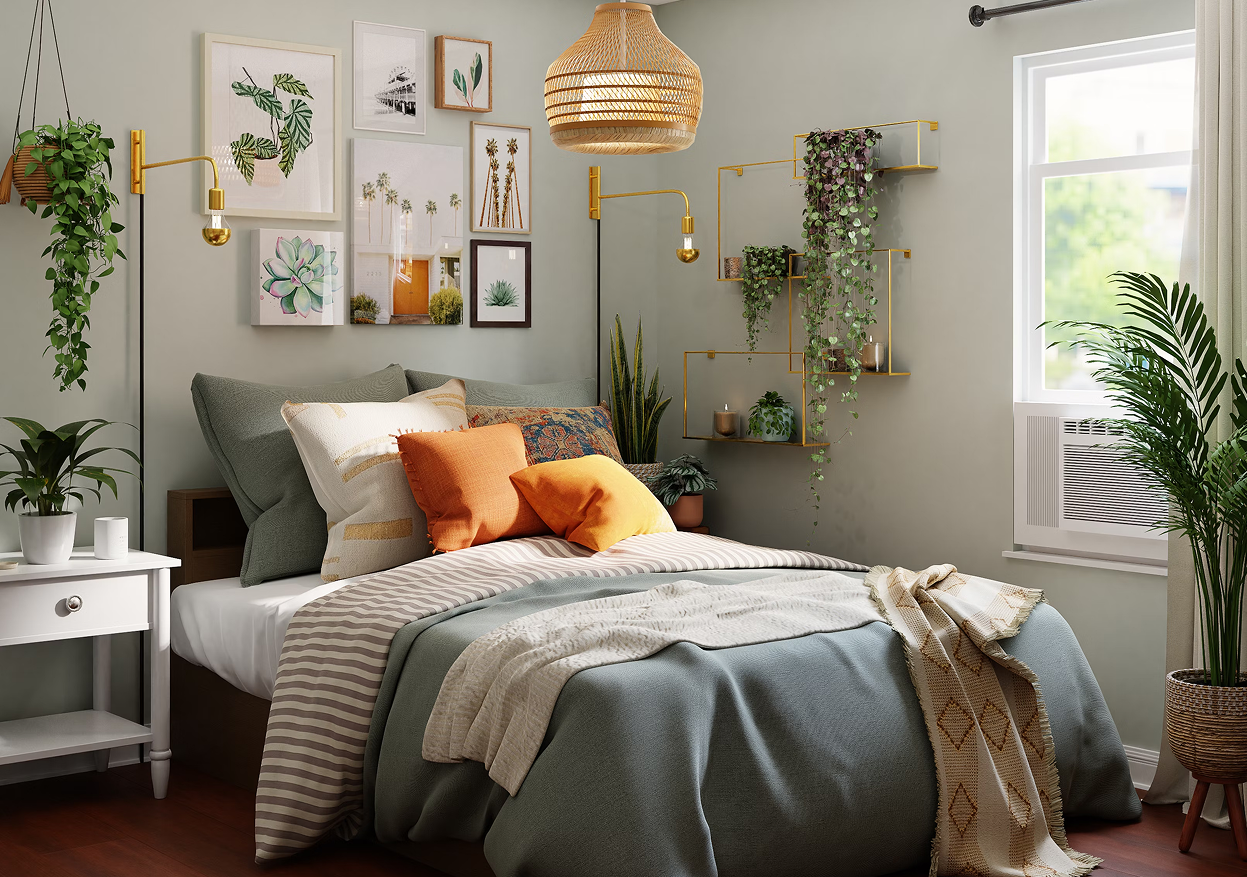
Sell homes faster with realistic 3D renderings, boost buyer confidence, reduce risk, and turn floor plans into powerful visual experiences.
“High-quality, incredibly realistic 3D pictures (renderings) are much more than just marketing fluff. They are powerful tools that tap into how buyers think, build crucial trust, and seriously speed up the selling process.”
Selling a home before it’s even built is a unique challenge. You’re not just selling a floor plan; you’re selling a dream, a future lifestyle, a promise based on drawings. But asking someone to spend a huge amount of money on something they can’t physically see requires a big leap of faith.
This is the main hurdle in selling homes “off-plan”: how do you turn architectural drawings into buyer confidence and get them excited enough to sign on the dotted line, faster?
Many developers use some kind of pictures or visuals. But just having pictures isn’t enough. The real game-changer is quality.
High-quality, incredibly realistic 3D pictures (renderings) are much more than just marketing fluff. They are powerful tools that tap into how buyers think, build crucial trust, and seriously speed up the selling process.
This is really important for homebuilders, developers, and real estate marketers trying to sell homes that aren’t built yet.

Suggestion: A striking split-screen. Left: A technical blueprint section. Right: A beautiful, realistic 3D rendering of how that exact space will look when finished.
Selling homes before they exist means overcoming some common buyer worries:
These aren’t just buyer anxieties—they cause real business problems like slower sales and higher holding costs.
Why are high-quality renderings so effective? It’s about how our brains work. We are visual creatures, wired to understand pictures instantly.
Super-realistic 3D renderings skip mental effort. They offer:
How buyers perceive the home becomes their reality in pre-sales. When they feel like they’ve already seen their future home, the leap of faith gets smaller.

Suggestion: A close-up 3D rendering focusing on realistic details, like wood grain or kitchen textures.
Perfectly matched renderings show professionalism and care. Buyers often feel attention to visuals means attention to actual construction quality.
Showing accurate textures (wood, faucets, cabinetry) signals value and helps justify pricing.
Detailed visuals remove uncertainty, showing ceiling heights, views, and lighting clearly.

Suggestion: A lifestyle rendering — a cozy patio at dusk or inviting living room scene.
Top-notch 3D rendering isn’t a cost—it’s an investment. Here’s how:
Okay visuals aren’t enough today. Smart developers use visualization to reduce risk and drive faster sales.
Choosing the right 3D rendering company is key. They help:
Spending money on great architectural visuals isn’t just an expense; it’s a smart investment in selling homes faster and reducing risk.
Look at the visuals you’re using. Are they working hard enough? Improving your visual strategy could directly increase speed and profit.
The journey from blueprint to pre-sale depends on buyer confidence. Realistic 3D renderings bridge that gap. They build trust, create connection, and clearly show value.
Strategic investment in superior visualization—perhaps through expert 3D rendering services—does more than make your project look good. It drives clarity, trust, and results.

Unlike mass-produced items, handmade pieces carry the distinct imprint of the artisan's touch. Each imperfection becomes a mark of authenticity, making every item a one-of-a-kind masterpiece.
Handmade products often align with sustainable practices, using locally sourced materials and minimizing waste. Supporting artisanal work contributes to eco-conscious living and helps preserve traditional techniques.
Handmade products often align with sustainable practices, using locally sourced materials and minimizing waste. Supporting artisanal work contributes to eco-conscious living and helps preserve traditional techniques.

The creation of handmade goods is an intimate process, often beginning with raw materials. For instance:
These artisans invest hours, sometimes days, into a single piece, ensuring it meets their high standards of excellence.
Owning a handmade item is more than acquiring a product—it’s forming a connection. It’s about appreciating the time, effort, and passion poured into its creation. Artisanal products carry an emotional weight, reminding us of the human touch behind their existence.
From local markets to global platforms, there’s a growing demand for artisanal products. By choosing handmade over mass-produced, consumers celebrate:
Artisanal craftsmanship and handmade elements remind us of the beauty in slowing down and valuing the process behind the product. In a world of instant gratification, these creations offer a timeless elegance and a profound connection to the maker’s craft.
Let’s celebrate the handmade, not just as a product, but as a philosophy that values quality, tradition, and the art of creating with intention.
We craft stunning renderings and animations that bring unbuilt properties to life. Our work is all about capturing that magical “wow” moment. The kind that makes you see the future and feel inspired by what’s to come.